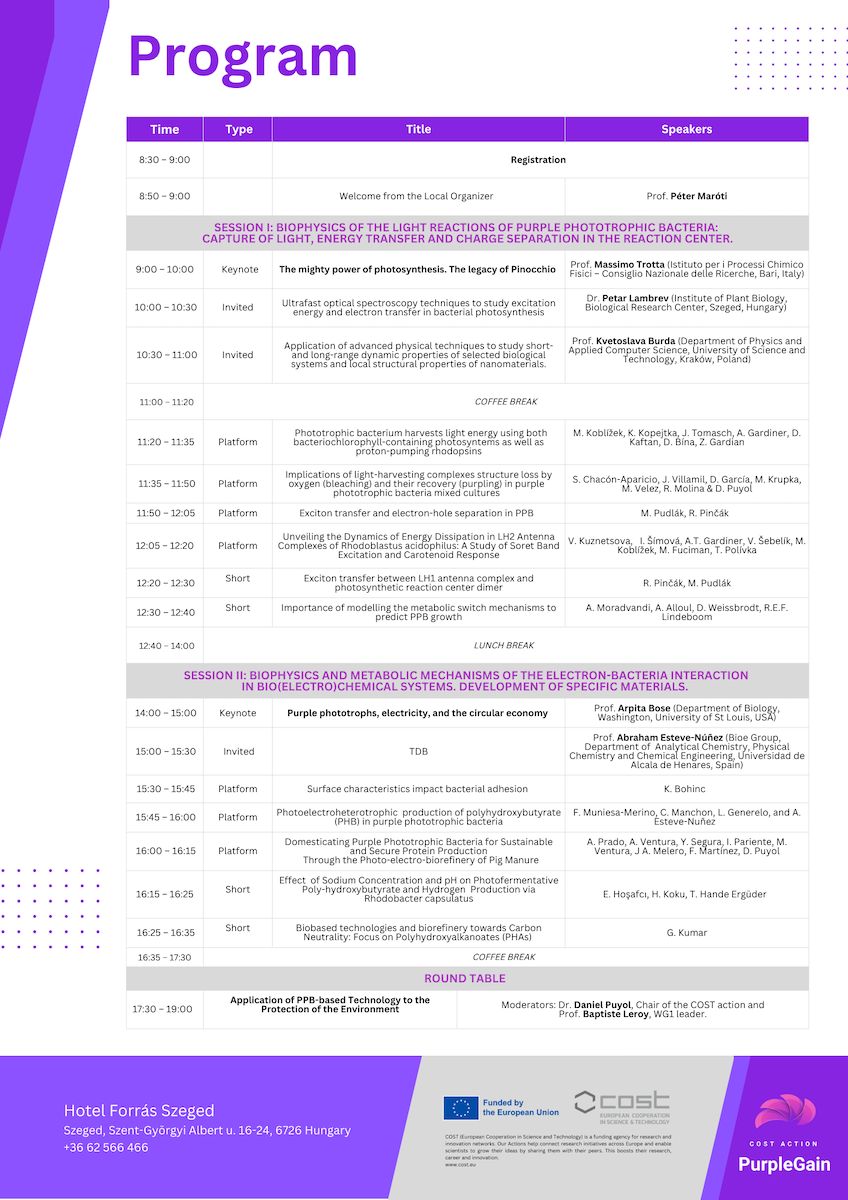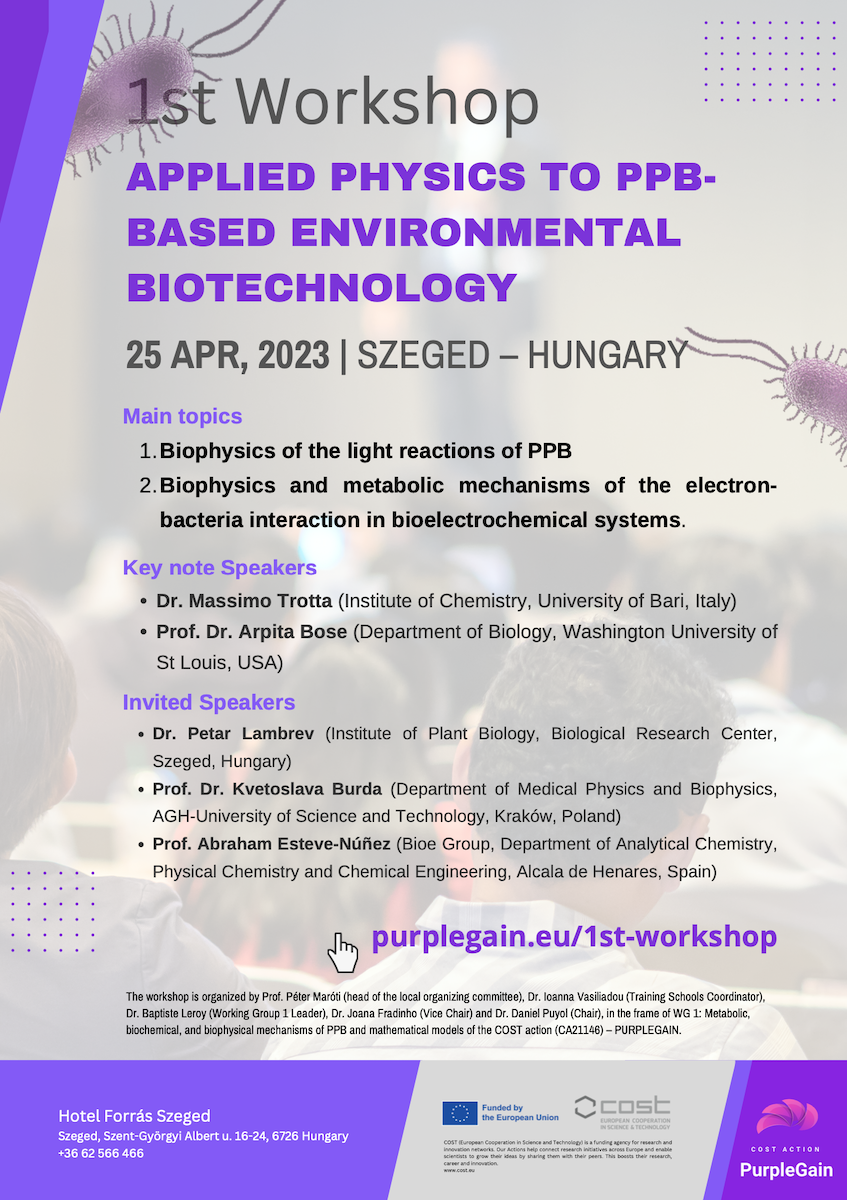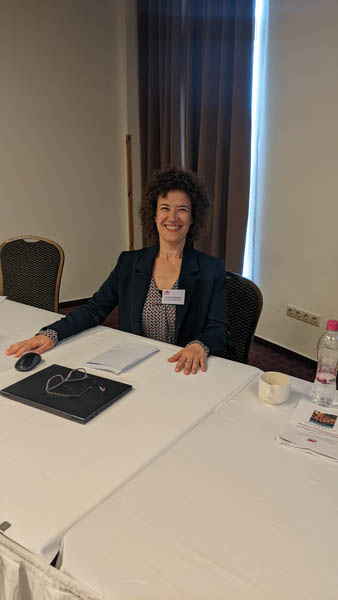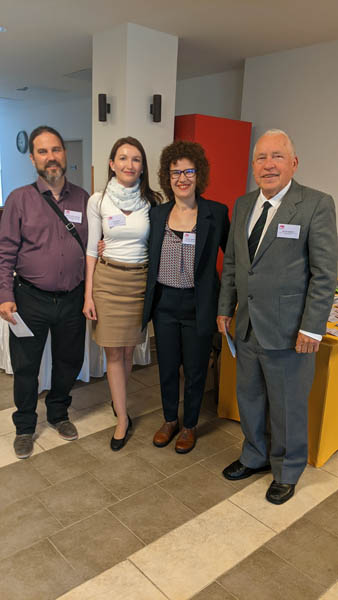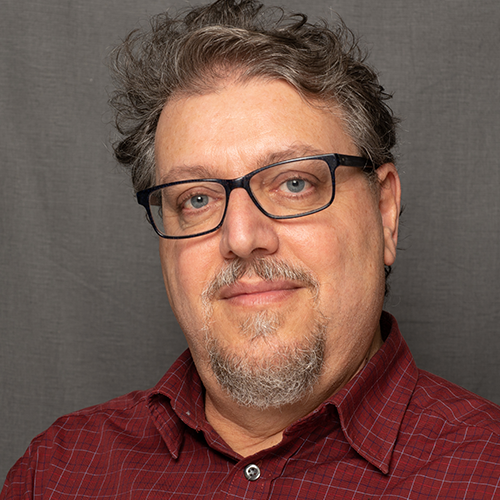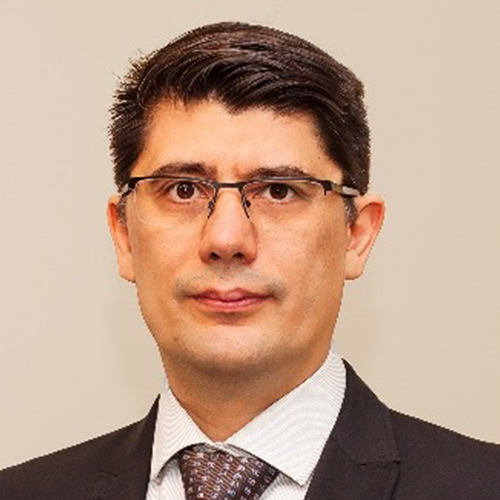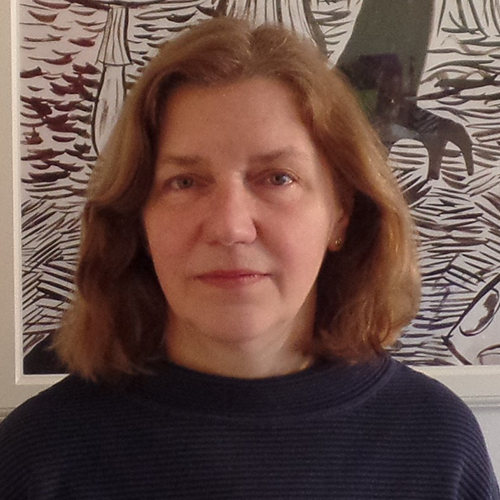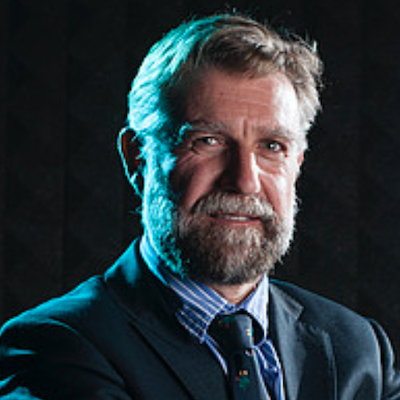1st Workshop
Applied Physics to PPB-based Environmental Biotechnology
25th April 2023
Szeged – Hungary
KEY DATES
- Registration is now open (free of charges) until 18th April 2023.
- Notification of selected abstracts and funding results (if applicable, in the form of reimbursement): 18th March 2023.
- Workshop date: 25th April 2023
COST Action
COST Action CA21146
COST Action CA21146 is a four-year networking action that aims at creating a European network to share information, facilitating technology and knowledge transfer between the academic and industrial sectors, related to Purple Photosynthetic Bacteria (PPB) applications for resource recovery from organic waste sources. Resource recovery includes wastewater or organic waste, open or closed environments, in single or chain processes.
The network associates fundamental-focused and applied research groups, improving lab-scale technology optimization through mechanistic modeling. It benefits the technology transfer from applied-research groups to industry, considerably improving process design. PURPLEGAIN also aims to create a database for techno-economic, social and environmental impacts studies, which facilitates the marketability of both the PPB-based technologies and the products to extract. Some focused products are polyhydroxyalkanoates, single-cell proteins, biomass for energy, biomass as fertilizer, biohydrogen, carotenoids, terpenoids, organic acids, coenzyme Q10, and 5-aminolevulinic acid.
COST
COST is an intergovernmental framework for European Cooperation in Science and Technology established to initiate networking and coordination of nationally funded research activities on a European level. It facilitates bringing good scientists together under light strategic guidance based on networks, called COST Actions, centred around research projects in fields that are of interest to COST countries and cooperating countries.
1st Workshop
Presentation
The workshop is organized by Prof. Péter Maróti (head of the local organizing committee), Dr. Ioanna Vasiliadou (Training Schools Coordinator), Dr. Baptiste Leroy (Working Group 1 Leader), Dr. Joana Fradinho (Vice Chair) and Dr. Daniel Puyol (Chair), in the frame of WG 1: Metabolic, biochemical, and biophysical mechanisms of PPB and mathematical models of the COST action (CA21146) – PURPLEGAIN.
- Celebration date: 25th April 2023, Szegez, Hungary
- Location: The workshop will be celebrated at Hotel Forrás Szeged
Key dates
- Registration is now open (free of charge)
- Final date to submit abstracts for oral communication:
- 28th February 2023 Extended: 7th March 2023.
- (Download Template)
- Final date to apply for reimbursement funding: 28th February 2023 Extended: 7th March 2023.
- Notification of selected abstracts and funding results (if applicable, in the form of reimbursement): 18th March 2023.
Scope
The concept of circular economy is based on our capacity to Reduce, Reuse and Recover resources. Resource recovery requires a complete reorganization of waste treatment, which is mainly based on resource dissipation (denitrification, combustion, landfilling, etc.). Resources recovery from biological waste treatment strategies is a currently very active field of research (Puyol et al., 2017), and PPB should play a major role in this socioeconomic revolution. Purple phototrophic bacteria (PPB) have extensively been studied and implemented in axenic pure-culture systems to produce biohydrogen, bulk chemicals, and value-added products like polyhydroxyalkanoates (PHAs), fertilizers, cosmetic and food supplements, etc. The versatility of PPB is now becoming more widely harnessed in the academic community, resulting in the development of new environmental biotechnology practices that use mixed-culture PPB bioprocesses to treat and convert complex used streams like wastewater or agro-industrial waste into clean water and added-value products. In addition, PPB have evolved into a biophysical paradigm due to the very high efficiency of their light-collecting machinery.
Furthermore, the photosystem of PPB has been used for biochemical applications, including enzyme-mediated photo-catalysis or photo-bioelectrochemical devices. Indeed, it has been proved that PPB can be active both as electron donors (microbial fuel cells) as well as electron acceptors (microbial electrosynthesis), which is unusual in nature. This is due to their highly efficient electron allocation through their metabolism, which potentially yields one functional electron per electron assimilated, converting PPB into one of the most thermodynamically efficient organisms on earth.
Based on the above, the workshop is focused on two main topics:
- Biophysics of the light reactions of PPB: the capture of light, energy transfer and charge separation in the reaction centre and
- Biophysics and metabolic mechanisms of the electron-bacteria interaction in bioelectrochemical systems. Development of specific conductive or semiconductive materials.
Topics
We invite abstract contributions for oral presentations to this interdisciplinary workshop from all academic disciplines (PhD students, young researchers, post-doctoral and senior researchers, and professors) and other stakeholders, that address the following issues of the two main topics:
- Biophysics of the light reactions of PPB: capture of light, energy transfer and charge separation in the reaction center
Sub-Topics:- Import and export of light induced electrons in RC.
Role of quinones and cytochromes in cyclic electron transfer.
Effects of mutations and environmental factors.
Recent and advanced methods
- Import and export of light induced electrons in RC.
- Biophysics and metabolic mechanisms of the electron-bacteria interaction in bioelectrochemical systems. Development of specific material.
Sub-Topics:- Photo-bioelectrochemical systems for resource recovery: microbial photo-fuel cells and microbial photo-electrosynthesis
- Metabolic and biochemical interactions between purple bacteria and conductive materials
- Development of conductive and semiconductive materials for photo-bioelectrosynthesis
Rules for abstract submission
- Abstracts should have a maximum of 350 words (download the Abstract Template).
- Contributors could apply for financial support (see financial support section).
Program
8:30-9:00|Registration
08:50 – 09:00 | Welcome from the Local Organizer. Prof. Péter Maróti
9:00-11:00|Session I. Biophysics of the light reactions of Purple Phototrophic Bacteria: capture of light, energy transfer and charge separation in the reaction center
09:00 – 10:00 | Prof. Dr. Massimo Trotta (Institute of Chemistry, University of Bari, Italy)
The mighty power of photosynthesis
Planet Earth sustains all its life forms by exploiting photosynthesis, a paramount biological process performed by plants, algae, and some bacteria. Photosynthesis is the sole biological process able to fix energy on Earth by harvesting sunlight. The planetary relevance of such metabolic process was clear to Giacomo Ciamician, one of the founders of modern photochemistry who delivered a visionary in 1912 speech [1] on the urgency of substituting fossil fuels with “The enormous quantity of energy that the Earth receives from the sun”, anticipating by more than one century what is now an almost universally shared opinion.
Two wars, the availability and handiness of fossil fuels and many skeptical world’s leaders have pushed the much-needed deadline for leaving the carbon based energy production further and further. Eventually, spurred by the vision of Ciamician, at the end of the last century the idea of artificial photosynthesis for producing sustainable energy kicked in the scientific community.
Twenty some years and many attempts later, awareness struck: complexity is the key to harness the energy from the Sun and no matter how hard you try, you cannot outdo the primary energy transducers fine-tuned by billions of years of evolution. A lesson learned the hard way, similarly to the way Pinocchio [2] learnt his after meeting the Fox and the Cat, agreed to reach the Field of Wonders in the City of Simple Simons and bury coins.
More recently, the possibility to use whole, metabolically active photosynthetic organisms in technological applications is gaining momentum in the scientific community. Results appear interesting and promising. In other words, if you can’t beat photosynthetic organisms, join them!
The recent attempts made in our laboratory to harness light and exploit it [3-7] are a useful little roadmap to employ photosynthetic bacteria in environmental applications.
10:00 – 10:30 | Dr. Petar Lambrev (Institute of Plant Biology, Biological Research Center, Szeged, Hungary)
Ultrafast optical spectroscopy techniques to study excitation energy and electron transfer in bacterial photosynthesis
In photosynthetic organisms, including purple photosynthetic bacteria, photon energy is captured by pigments in the light-harvesting antenna complexes and transferred to the photochemical reaction centers where electron transfer converts the excitation energy into energy of energy of the charge separated states. These excitation energy and electron transfer processes occur on ultrafast timescales – from femtoseconds to picoseconds. The efficiency of energy and electron transfer is crucial for the overall efficiency of photosynthesis and depends on the protein matrix and the external environment. Ultrafast optical spectroscopy techniques are essential to study the efficiency, dynamics, the intermediate steps and kinetic bottlenecks of the energy and electron transfer processes in photosynthetic systems. These techniques use short laser pulses to excite the sample and measure the time-dependent changes in the absorption and emission spectra. During the past two decades, two-dimensional electronic spectroscopy (2DES) has emerged as a powerful technique to study energy and electron transfer in photosynthetic systems. It provides a detailed map of the energy transfer pathways and can reveal the dynamics of energy transfer on femtosecond to picosecond timescales. 2DES has been used to study a variety of photosynthetic systems, from isolated pigments, antenna and reaction center complexes to living cells of photosynthetic bacteria. By measuring the interactions between different pigments in the photosynthetic system, this technique can reveal the mechanisms of energy transfer and provide insight into the factors that affect the efficiency of photosynthesis.
10:30 – 11:00 | Prof. Dr. Kvetoslava Burda (Department of Medical Physics and Biophysics, AGH-University of Science and Technology, Kraków, Poland)
Ultrafast optical spectroscopy techniques to study excitation energy and electron transfer in bacterial photosynthesis
In photosynthetic organisms, including purple photosynthetic bacteria, photon energy is captured by pigments in the light-harvesting antenna complexes and transferred to the photochemical reaction centers where electron transfer converts the excitation energy into energy of energy of the charge separated states. These excitation energy and electron transfer processes occur on ultrafast timescales – from femtoseconds to picoseconds. The efficiency of energy and electron transfer is crucial for the overall efficiency of photosynthesis and depends on the protein matrix and the external environment. Ultrafast optical spectroscopy techniques are essential to study the efficiency, dynamics, the intermediate steps and kinetic bottlenecks of the energy and electron transfer processes in photosynthetic systems. These techniques use short laser pulses to excite the sample and measure the time-dependent changes in the absorption and emission spectra. During the past two decades, two-dimensional electronic spectroscopy (2DES) has emerged as a powerful technique to study energy and electron transfer in photosynthetic systems. It provides a detailed map of the energy transfer pathways and can reveal the dynamics of energy transfer on femtosecond to picosecond timescales. 2DES has been used to study a variety of photosynthetic systems, from isolated pigments, antenna and reaction center complexes to living cells of photosynthetic bacteria. By measuring the interactions between different pigments in the photosynthetic system, this technique can reveal the mechanisms of energy transfer and provide insight into the factors that affect the efficiency of photosynthesis.
11:00-11:20|Coffee-Break
11:20-12:40|Oral presentations I
11:20 – 11:35 |M. Koblížek, K. Kopejtka, J. Tomasch, A. Gardiner, D. Kaftan, D. Bína, Z. Gardian
Phototrophic bacterium harvests light energy using both bacteriochlorophyll-containing photosyntems as well as proton-pumping rhodopsins
Bacterium Sphingomonas glacialis AAP5 isolated from the alpine lake Gossenköllesee contains genes for anoxygenic phototrophy as well as proton-pumping xanthorhodopsin. However, these genes are not expressed in standard laboratory conditions. In order to find under which conditions the organisms expresses its light harvesting apparatus we conducted a larger investigation employing RNA sequen-cing, RTqPCR, metabolic assays and biochemical and biophysical investigation of its photosynthetic complexes. We found out that our strain readily express xanthorhodopsin when illuminated at tempera-tures below 14°C. In contrast bacteriochlorophyll-containing reaction centers are expressed between 4 and 23°C in the dark. Thus, cells grown at low temperature under natural light-dark cycle produced both photosystems (Fig. 1). The photosynthetic complexes consist of the type-2 reaction center surrounded by circular light-harvesting complex 1. The purified xanthorhodopsin contains carotenoid nostoxanthin serving as an auxiliary antenna and performs the standard photocycle. The xantho-rhodopsin-producing cells reduced upon illumination their respiration by 70%. This documents that the harvested light energy was utilized in the metabolism, which can represent a large benefit under carbon-limiting conditions.
The presence of two different photosystems may represent a metabolic advantage in alpine lakes where photoheterotrophic organisms face large changes in irradiance, limited organic substrates and low temperature.
11:35 – 11:50 |S. Chacón-Aparicio, J. Villamil, D. García, M. Krupka, M. Velez, R. Molina & D. Puyol
Implications of light-harvesting complexes structure loss by oxygen (bleaching) and their recovery (purpling) in purple phototrophic bacteria mixed cultures
Purple phototrophic bacteria (PPB) have gained importance in the biological treatment of wastewater and other streams due to their ability to recover C, N, and P through photoheterotrophic metabolism. Their light-harvesting complexes LHC2 and LHC1 transform the near-infrared (NIR) light into chemical energy in the reaction centers, which are composed of bacteriochlorophylls (BChl) and different carotenoids. However, their phototrophy is negatively affected in the presence of oxygen due to the oxidation of BChl, losing their photosynthetic machinery and causing displacement by aerobic bacteria in non-axenic conditions.
This work aims to evaluate the effect of oxygen on the photosynthetic capacity of a mixed culture of PPB (bleaching) and the recovery of these after subjecting them to anaerobic conditions (purpling). The evaluation is performed by directly analyzing the biochemical system response and through AFM to visualize the LHC structure loss and regain depending on dissolved oxygen (DO) concentrations.
11:50 – 12:05 |M. Pudlák, R. Pinčák
Exciton transfer between LH1 antenna complex and photosynthetic reaction center dimer
We deal with the exciton transfer between light-harvesting complex 1(LH1) and reaction centres (RC) dimer. We show that the RC dimer does not act as a photo trap. The backward exciton rate constant from the dimer to the LH1 antenna complex depends on the number of chlorophyll molecules which create the LH1 ring complex. The electron transfer in PPB reaction centres is directed by the vibration modes into the needed site where the electron is localized. In the case of the PPB RC, the low-vibration modes produce such an effect.
12:05 – 12:20 |V. Kuznetsova, I. Šímová, A.T. Gardiner, V. Šebelík, M. Koblížek, M. Fuciman, T. Polívka
Unveiling the Dynamics of Energy Dissipation in LH2 Antenna Complexes of Rhodoblastus acidophilus: A Study of Soret Band Excitation and Carotenoid Response
The light-harvesting complexes incorporate pigment-protein systems that absorb light through pigments such as (Bacterio)chlorophylls, carotenoids, and bilins. Ultrafast spectroscopy has helped us learn more about energy transfer in photosynthesis and many antenna proteins have been studied. Most of these studies have excited the lowest-absorbing states of pigments, such as the Qy states of (B)Chl or the S2 state of carotenoids. The upper excited states, like the Soret or Qx bands of (B)Chl, also contribute to light harvesting. However, we have limited knowledge about how excess energy excitation affects the process. Here we would like to address the relaxation dynamics of upper excited state and the impact of excess energy dissipation on the system. The LH2 antenna complex of Rhodoblastus acidophilus has been chosen as a model system.
The study presents data comparison of the excited state dynamics of pigments in LH2 after excitation of either the Soret or B800 band of BChl a, and the S2 state of the carotenoid (rhodopin glucoside). There are weak signals in the spectral region of carotenoid absorption bands after BChl a excitation. These confirms that there is no energy transfer from the BChl a Soret band to the S2 state of rhodopin glucoside in LH2. The possible explanation is an unfavorable mutual orientation of the transition dipoles that are nearly orthogonal. The rich signal in the 450–650 nm spectral region after BChl a excitation is likely due to an electrochromic shift of the carotenoid S2 state resulting from a change in local electric field upon BChl a excitation.
The Soret band of BChl a decays to the Qy state within 200 fs and excess energy is stored in vibrational modes of the Qy state. The carotenoid nearby responds to this energy dissipation, indicating the cooling of the BChl a Qy state. We also found a sub-nanosecond triplet–triplet energy transfer between BChl a and carotenoid rhodopin glucoside, faster than singlet–triplet intersystem crossing. These findings have been summarized in a new model of energy flow in LH2 complex (see Figure).
12:20 – 12:30 | M. Kis, T. Szabó, J. Tandori, P. Maróti
Donor side mutations reduce the turnover rate of the reaction center of photosynthetic purple bacteria
[]
12:30 – 12:40 |A. Moradvandi, A. Alloul, D. Weissbrodt, R.E.F. Lindeboom
Importance of modelling the metabolic switch mechanisms to predict PPB growth
Purple phototrophic bacteria are a group of photosynthetic bacteria that use light energy to drive metabolic processes, making them promising candidates for sustainable biotechnological applications. They are metabolically diverse microorganisms with the ability to grow either photo- and chemo-heteroreophically.
Mechanistic models have been developed for PPB growth for further operation and control design. To overcome costly implementation of anaerobic implementation of PPB reactors, a mechanistic model for raceway reactors as an alternative has been developed. A metabolic switch among photo-, aerobic chemo- and anaerobic chemo- heterotrophic growth has been taken into account in the model. The idea is to consider photoheterotrophic biomass grown in aerobic and anaerobic chemoheterotrophic conversions and vice versa. Dependent PPB metabolic division of labor has been experimentally supported. The presentation aims to open up the discussion on the importance of a deeper level of mechanistical understanding of the associated biophysical and bioenergetics mechanisms influencing the metabolic pathways in PPB.
12:40-14:00|Lunch Break
14:00-15:30|SESSION II. Biophysics and metabolic mechanisms of the electron-bacteria interaction in bioelectrochemical systems. Development of specific material
14:00 – 15:00 | Prof. Dr. Arpita Bose (Department of Biology, Washington University of St Louis, USA)
Purple phototrophs, electricity, and the circular economy
The Bose lab studies microbial metabolisms and their influence on biogeochemical cycling using a transdisciplinary approach. We apply the knowledge we gain to generate new ways of addressing issues such climate change, sustainability, and the circular economy. My lab’s recent work has focused on the ability of microbes to use solid-phase conductive materials as electron donors. The ability to use electrons from minerals and other solid-phase conductive materials (in essence using electricity) is called “Extracellular Electron Uptake” or (EEU). EEU fundamentally changes our perception of the ecological role of microbes (including phototrophs) in nature because it suggests that abundant elements (such as iron) can serve as electron sources for microbial productivity and survival. In addition, our work suggests that EEU might be a fundamental process that underlies microbial energy conservation ranging from terrestrial and aquatic ecosystems to the human body. The Bose lab has pioneered technologies to study EEU, driven fundamental knowledge in the field, and laid a solid foundation of tools and approaches to answer key questions about EEU in nature. We have applied this knowledge to produce carbon-negative bioplastics and carbon-neutral biofuels. Currently, we are pursuing fundamental and applied research on phototrophic EEU, and determining its role in microbial ecology in marine and freshwater ecosystems. We are leveraging this knowledge to develop a variety of climate technologies for the circular economy.
15:00 – 15:30 | Prof. Abraham Esteve-Núñez (Bioe Group, Department of Analytical Chemistry, Physical Chemistry and Chemical Engineering, Alcala de Henares, Spain)
Fine tuning the metabolism in Purple Phototrophic Bacteria: the use of planktonic electrochemistry
Fine tuning the metabolism in Purple Phototrophic Bacteria: the use of planktonic electrochemistry
15:30-16:35|Oral presentations from Applicants
15:30 – 15:45 |K. Bohinc
Surface characteristics impact bacterial adhesion
Material surfaces can promote or inhibit microbial adhesion, depending on material and microbial surface characteristics. In my presentation I will present our recent experiments on different technological and medical relevant surfaces [1-5]. The surface roughness was controlled by atomic force microscope and profilometer. The zeta potential and contact angles were measured correspondingly by the tensiometer and kinetic analyzer. The rate of adhered bacteria on different type of surfaces was determined with spectrophotometer and scanning electron microscopy. The factors which impact the microbial adhesion to material surfaces will be discussed. At the end, the outlook will be given.
15:45 – 16:00 |F. Muniesa-Merino, C. Manchon, L. Generelo, and A. Esteve-Nuñez
Photoelectroheterotrophic production of polyhydroxybutyrate (PHB) in purple phototrophic bacteria
Purple phototrophic bacteria (PPB) are known due to their metabolic versatility. Thus, they could be exploited for the production of added value products such as H2 and PHB, through the electron interchange with an electrode (Manchon et al., 2023; Vasiliadou et al., 2018a).
Regarding PHB production, microbial electrosynthesis (MES) has been reported to be a suitable strategy under photoautotrophic conditions (Ranaivoarisoa et al., 2019). In this work, a mixed PPB culture enriched from brewery wastewater was grown under photoheterotrophic conditions with two different electrode configurations as electron donor: i) conventional graphite rod and ii) moving bed electrode (vitreous carbon). Both bioreactors were polarized at -0,8 V vs. Ag/AgCl to evaluate i) PHB production and ii) bioelectrochemical performance. In both bioelectrochemical reactors there was a significant increase in PHB production (figure 1) when PPB were grown in presence of an electrode as electron donor. Electrode-free and open circuit configurations were used as control.
Overall, the polarized reactors outperformed the non-polarized ones for PHB production with a similar carbon source consumption. In addition, the highest PHB production was achieved in presence of vitreous carbon as electron donor. Even though a low current consumption was shown for the graphite rod, the polarization did have an effect in electrofermentation (Virdis et al., 2022) as a redox potential controller in comparison with electrode-free control.
16:00 – 16:15 |A. Prado, A. Ventura, Y. Segura, I. Pariente, M. Ventura, J A. Melero, F. Martínez, D. Puyol
Domesticating Purple Phototrophic Bacteria for Sustainable and Secure Protein Production Through the Photo-electro-biorefinery of Pig Manure
Climate change, water scarcity and soil degradation threaten global food security and may deplete natural resources by 2050. Pig farming generates a significant amount of manure, around 1.3-1.8 billion tons annually in the European Union, containing high nitrogen concentrations that contribute to pollution and greenhouse gas emissions. Current animal-based protein production for human consumption is unsustainable and inefficient, requiring a shift towards more sustainable protein production methods [1]. This study proposes photo-microbial electrosynthesis as a versatile solution for both manure treatment and sustainable protein production.
Purple phototrophic bacteria (PPB) are highly versatile microorganisms that have recently been proposed as a promising alternative source of protein. They perform anoxygenic photosynthesis using a wide range of soluble electron donors, and some can even accept electrons from solid phases such as minerals and graphite electrodes. The mechanism used for electron uptake from a cathode electrode is direct extracellular electron transfer (DEET), which is compatible with carbon fixation via the Calvin-Benson cycle. In electro-autotrophic conditions, PPB can achieve up to 60% protein yield, making them a potential alternative source of protein with an amino acid profile well suited for human consumption. [2,3,4].
The VALPIG4FOOD project proposes a novel photo-electro-biorefinery to treat pig manure and convert it into microbial protein and biomethane (Fig. 1). This project aims to increase the sustainability of pig manure treatment by avoiding the dissipation of nutrients into the soil and atmosphere and reducing carbon emissions to zero. The proposed biorefinery recovers the ammonium from hydrolyzed pig manure and the biogas generated in the anaerobic digestion to feed a photo-microbial electrosynthesis (photo-MES) system to upgrade biogas to biomethane and produce PPB protein for human food consumption [5,6].
16:15 – 16:25 |E. Hoşafcı, H. Koku, T. Hande Ergüder
Effect of Sodium Concentration and pH on Photofermentative Poly-hydroxybutyrate and Hydrogen Production via Rhodobacter capsulatus
Demand on petroleum derived materials constitute a bottleneck in transitioning from fossil fuel-based energy economy to more sustainable methods of energy production [1]. A major product of crude oil processing is commodity plastics [2]. Poly-hydroxybutyrate (PHB) is a compound synthesized by microbial species, with properties being similar to the aforementioned plastics [3]. PHB can be produced in abundance via purple non-sulfur bacteria (PNSB) [4]. The aim of this study is to investigate the effect of various stress conditions in the form of elevated sodium (Na+) concentration and pH levels on hydrogen and PHB production via photofermentation using uptake hydrogenase deficient Rhodobacter capsulatus YO3. To this purpose, two experimental designs were set up (Fig.1). In Set 1, effect of increasing Na+ concentration was investigated, using two different substrate types, acetate and sucrose. As a result of Na+ increase, elevated pH was observed to be a significant stress in acetate-containing reactors. Maximum PHB accumulation was 57.7 ± 5.2% and 3.3 ± 0.4% of cell dry weight (cdw) for acetate and sucrose, respectively. Maximum hydrogen productivities were 0.58 ± 0.03 mmol/L·h and 0.73 ± 0.06 mmol/L·h, respectively for acetate and sucrose. As pH contributed significantly to PHB accumulation, Set 2 was set up using acetate as the carbon source with three different pH levels, namely 7.0, 7.7 and 8.5, that were kept constant throughout the operation. In the 1st phase of reactor operation, Na+ concentration was kept at 1750 mgNa+/L, followed by around 3500 mgNa+/L. Maximum PHB accumulation was 57.5 ± 0.2% of cdw at 8.5 pH and 33.6 ± 2.0% of cdw at 7.7 pH for low and high Na+ conditions. Maximum hydrogen productivity was observed as 0.42 ± 0.01 mmol/L·h at pH 7.0.
It was concluded that sole Na+ or sole pH do not contribute significantly to PHB accumulation, rather elevated pH and Na+ concentration should be applied simultaneously to enhance accumulation of PHB. It was also observed that sucrose-containing reactors produced minimal amounts of PHB with higher H2 productivity, indicating that the system should be operated under more stressful conditions to favor the production of PHB over H2.
16:25-17:00|Coffee-Break
17:00-18:30|Round table discussion on “Application of PPB-based Technology to Protection of the Environment”
Moderators: Dr. Daniel Puyol, Chair of the COST action and Prof. Baptiste Leroy, WG1 leader.
Speakers
Accommodation and Transportation information
Room rates
Room rates of Hunguest Hotel Forrás
| Appellation | Room rates in HUF/room/night |
| Double room for 1 person | 32.000 |
| Double room | 52.000 |
| Apartment for 1 person | 41.000 |
| Apartment for 2 persons | 61.000 |
| Spare bed | 22.000 |
More information
About the price
- The price includes accommodation, a rich buffet breakfast, unlimited entrance to the pools of the neighboring Napfényfürdő Aquapolis Szeged (family wellness, adventure bath, slide park, medicinal pools, beach), as well as unlimited entrance to the Forrás Spa section of the spa. (A quiet relaxation zone where only people over 16 years of age can enter, ensuring guests can relax in a peaceful environment. Facilities: adventure and jacuzzi, Finnish saunas, infrared sauna, steam chamber, salt chamber, tepidarium, aroma room, outdoor log sauna.), WIFI internet, bathrobe, VAT.
- (On the day of departure, the spa complex can be used until 10:00.)
- The tourist tax (in 2022) for guests between the ages of 18-70 is 500 HUF/person/night, which is not included in the room rate.
- Payment method: Guests can get 100% with advance payment.
- Prices include VAT and service fee.
- Prices do not include commissions!
Parking
- In the parking lot in front of the hotel (approx. 40 places) and in the underground garage of the Napfényfürdő Aquapolis (approx. 230 places): 200 Ft/car/hour
- It is also possible to park free of charge on the side of our hotel, in the back parking lot of the hotel (about 50 seats).
Policy of penalty cancellation
- Penalty-free cancellation deadline: 30 days before arrival
- Penalty: in case of cancellation between 30-21 days, 30% of the ordered services, between 20-11 days 50%, 10-5 days between 75%. In case of cancellation within 4 days or failure to do so, 100% of the ordered services will be paid as penalty
Our remarks
- Transport from (to) Liszt Ferenc Airport Ferihegy (Budapest) to (from) Szeged either by train (every hour, duration 2 hours) or by car transfer (after registration).
- It is highly recommended to pay the hotel costs of the participants (guests) with their bank cards in HUF (Hungarian Forint) because the bank will carry out the Euro→HUF change on the actual mean exchange rate (of about 1 euro = 400 HUF) whereas the hotel on the fixed rate (and not guest-friendly way) of 1 euro = 360 HUF.
- Do not forget to take a swimsuit with you
Location
Hunguest Hotel Forrás
Szeged, Szent-Györgyi Albert u. 16-24, 6726 Hungary
Financial Support – Application procedure for reimbursement
Documentation for applying
The documentation needed for applying for reimbursement are as follows:
- Applicants must upload a short Curriculum Vitae (in English).
- Applicants must upload a motivation letter (in English).
Please, check the General Rules to be reimbursed.
Selection criteria
The selection criteria for participants that will be eligible for reimbursement will comply with the COST Excellence and Inclusiveness Policy, in the implementation of the Action and will encourage attendance by a diverse selection of participants in consideration of:
- Underrepresented groups, including those with disabilities. Priority will be given to underrepresented groups, including those with disabilities.
- Gender balance.
- The level of involvement of Inclusiveness Target Countries (ITCs). Priority will be given to participants from Inclusiveness Target Countries.
- The level of involvement of Early Career Investigators (ECIs). Priority will be given to PhD students and young post-doctoral researchers, followed by senior post-doctoral researchers and professors.
- In addition, workshop organizers may also consider other special attributes such as
- Type, or level of expertise in the field of the Workshop based on the curriculum vitae,
- Appropriate core knowledge and understanding
- Willingness to participate based on the motivation letter
- Demonstrated interest based on the motivation letter,
- The positive impact that the participants will have on the applicant’s future carrier and
- Willingness to make a presentation in the Workshop session.
Financial support through reimbursement does not necessarily cover all expenses but is a contribution to the overall travel, accommodation and meal expenses.
Financial contribution
The financial contribution for each successful applicant shall respect the following criteria:
- Up to a maximum of EUR 450 in total can be afforded to each successful applicant from ITC country.
- Up to a maximum of EUR 300 in total can be afforded to each successful applicant from non-ITC country.
Evaluation process and result announcement
Evaluation process
The selection committee, composed of the Action Chair, the Vice Chair, the Grant Awarding coordinator, the Training Schools Coordinator and the WG1 Leader, will evaluate the applications within a month after the abstract submission deadline and will inform the successful evaluated applicants. The successful applicants will then receive an e-mail from the grant holder (Grant Letter Notification), stating the official approval of the reimbursement, the granted budget and a payment request form which must be completed after the completion of the Workshop.
Criteria of reimbursement
If the amount of reimbursement by all applications within a call does not exceed the available budget, the applications are handled by the selection committee. If there are more applications than funding is available, the following procedure takes place.
- A list of all applications (containing an informative summary) is distributed to all members of the selection committee in form of a table in which every evaluator can mark which applications he or she can evaluate according to their field of expertise.
- To guarantee a fair and objective evaluation, an evaluator should have no affiliation with neither the home nor the host institution of the application in question.
- All applications are evaluated by two members of the selection committee. The Grant Awarding coordinator distributes the proposals to the individual evaluators.
- The criteria given in the table below shall be applied for evaluation. The first criterion (a) is assessed by the Grant Awarding coordinator prior to the evaluation process.
| Criterion | max. points |
| a) Before any further criteria are considered | |
| Application is complete and fulfils all formal requirements | pass/no pass |
| The application will be ranked last if the applicant was granted in previous call | pass/no pass |
| b) Evaluation of the proposal | |
| Applicant from ITC country | 0 or 10 |
| Applicant is ECI (or promotes gender balance) | 0 or 10 |
| Impact on the career of the applicant | 15 |
| Willingness to participate based on the motivation letter | 10 |
| Willingness to make a presentation in the Workshop session | 10 |
| CV of the applicant | 10 |
| Relevance to the objectives of PurpleGain Action | 20 |
- The evaluators report their evaluations to the Grant Awarding coordinator.
- The Grant Awarding coordinator ranks all evaluations and then reports the final result to the selection committee to be discussed and accepted.
- The applicants are informed about the decision reached.
More information
For further information, you may contact the
- Prof. Péter Maróti (head of the local organizing committee)
- Dr Daniel Melchor Puyol Santos – Chair
- Dr Raul Muñoz Torre – Grant Awarding Coordinator
- Dr Ioanna Vasiliadou – Training Schools Coordinator


